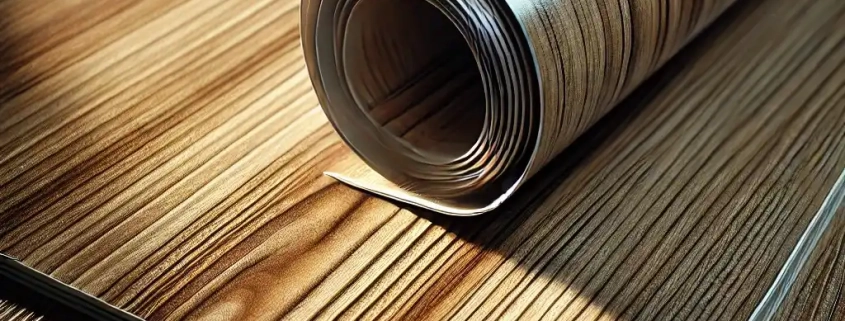What is the Temperature Resistance of PVC Lamination Film?
What is the Temperature Resistance of PVC Lamination Film?
The temperature resistance of PVC lamination foil is usually between **-10°C and 60°C**. It can maintain good performance within this temperature range. Beyond this temperature range, the performance of the film will decrease. This temperature resistance is sufficient for PVC lamination foil usually used for indoor furniture. However, this range will vary depending on the specific type and quality of the PVC foil, and different films have different temperature resistance levels. High-quality PVC lamination foil may perform well in a wider temperature range.
In addition, its temperature resistance is also related to whether it has undergone special UV treatment. The film treated with UV will have better temperature resistance and can adapt to more extreme temperature environments.
Temperature resistance level of PVC lamination foil
- Low-temperature tolerance (0°C to 30°C): Usually due to building shading, air conditioning, and other factors, the indoor environment is in this temperature range, and the temperature change will not change too quickly in a short period. Most PVC lamination foils used for furniture can use films within this temperature range. It usually uses ordinary plasticizers and stabilizers to resist basic deformation and environmental influences.
- Medium-temperature tolerance (-10°C to 60°C): This type of film has better temperature resistance and can adapt to a wider range of temperature changes. It needs to be resistant to ultraviolet rays to prevent cracking, deformation, or fading during temperature fluctuations. It is usually suitable for wall decorations such as window frames, balcony guardrails, and commercial spaces. These decorations are usually likely to be exposed to sunlight and exposed outdoors, so PVC films with better weather resistance and UV resistance are required.
- High-temperature resistance (-20°C to 80°C): The high heat-resistant plasticizers and stronger anti-UV additives commonly used in this film enable PVC lamination film to withstand higher temperatures and longer periods of direct sunlight without significant physical or chemical changes. This allows the film to maintain good performance at abnormal temperatures, especially UV resistance and aging resistance. It is very suitable for applications that are fully exposed to the outdoors, such as building exteriors, outdoor billboards, transportation facilities, yacht decorations, etc.
- Ultra-high temperature resistance (-30°C to 90°C or higher): The special formula used in this film, including high-temperature stabilizers and high-heat-resistant resins, allows PVC lamination foil to maintain its physical and chemical properties at extreme temperatures. This gives it the ability to withstand high temperatures without deformation, discoloration, or deterioration. This performance is suitable for applications in extreme temperature environments, such as pipe wrapping, high-temperature equipment exterior decoration, aircraft or car interiors, etc.
UV treatment of PVC lamination film
UV rays can cause the chemical bonds in PVC to break, causing the material to degrade, become brittle, or discolor. UV treatment can significantly reduce this damage and extend the service life of PVC membranes. Therefore, PVC lamination films that require high-temperature resistance need to undergo UV treatment, that is, by adding some additives and some process treatments to enhance the temperature resistance of the film.
- Formula design: During the production of PVC film, special anti-UV additives are added, such as UV absorbers and UV stabilizers. Anti-UV additives absorb or reflect ultraviolet energy to prevent ultraviolet photons from damaging the PVC molecular structure, such as causing the PVC molecular chain to break or turn yellow. In addition, these additives can also convert ultraviolet energy into low-energy heat or harmless light to avoid the degradation of PVC foil materials.
- Blending process: This step is to uniformly mix the anti-UV additive with PVC resin and other components through high-speed stirring or melt extrusion equipment so that the anti-UV additive can be evenly distributed in the PVC lamination film to ensure that every part Can resist ultraviolet rays.
- Calendering or extrusion molding: The blended PVC mixture is processed into a film through a calendering or extrusion process, which can maintain the activity of the anti-UV additives and make the final product have excellent UV resistance.
- Surface treatment: PVC lamination foil may also be coated with a layer of ultraviolet curing coating on the surface, and the coating can be quickly cured using a UV light source. The cured coating has a high degree of cross-linking density, which makes the film surface harder and more durable, further enhancing UV resistance. This is equivalent to adding another physical protective layer to the surface of the film to provide additional physical protection.



